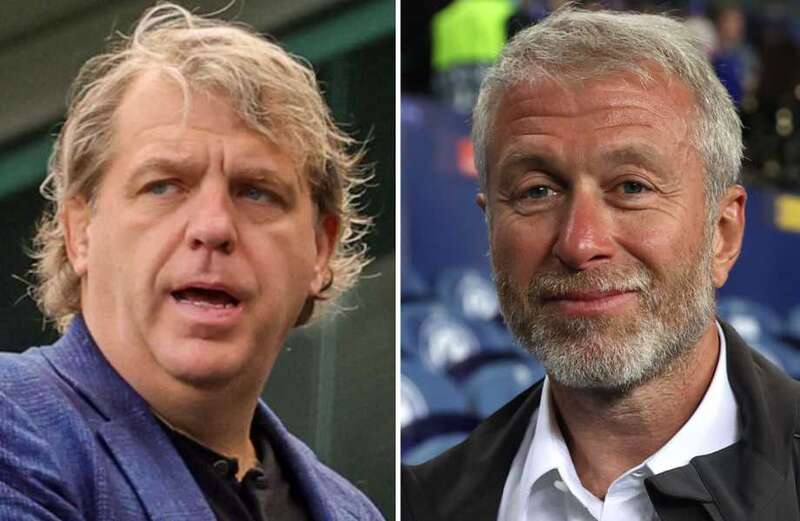WHILE Mauricio Pochettino struggles to construct a team on the pitch, his Chelsea bosses are finding it just as hard to build a stadium off it.
The consortium fronted by Todd Boehly is not only struggling to match the football success achieved under Roman Abramovich.


Their new regime is also finding it hard to overcome the main problem that even the billionaire Russian failed to solve in his 19-year reign.
Namely, how to provide the stadium and facilities befitting a club that aspires to be one of the world’s best and necessary to generate the revenue to keep it that way.
Chelsea, situated in one of the richest postcodes in the country, should be the most glamorous place to watch football in the Premier League, perhaps the world.
 Spectacular New Year fireworks light up London sky as huge crowds celebrate across UK for first time in three years
Spectacular New Year fireworks light up London sky as huge crowds celebrate across UK for first time in three years
But it is not even the top destination in London any more.
Arsenal, Tottenham and West Ham all moved into 60,000-seater homes while Roman’s roubles were taking the lion’s share of trophies to SW6.
Stamford Bridge, with its three ageing stands and capacity of just over 40,000, now feels shabby and outdated by comparison.
Just as importantly, both Arsenal and Tottenham make significantly more money per home match than Chelsea — £870,000 and £1.03million more per game, respectively.
And that is a big reason why, in the latest Deloitte Money League, Tottenham overtook Chelsea for total income for the first time and became the top-earning club in London with £549.2m in 2022-23.
It would be unfair to say Abramovich and his henchmen and women did not see the writing on the wall. Battersea Power Station, White City, Chelsea Barracks and the former Earls Court Exhibition Centre — all were considered, rejected and, for some, considered again.
To finance the move to a new site, Abramovich wanted to sell Stamford Bridge. But a key problem was — and is — that the club does not own the freehold of the stadium itself.
That was sold to a fan-run organisation called Chelsea Pitch Owners in 1997, in a move designed to protect the club and its home after property speculators almost sold it out from under them.
In 2011, Abramovich tried to buy back the freehold.
SunSport revealed how a number of people connected to Abramovich, chairman Bruce Buck and other members of the Chelsea hierarchy bought large numbers of CPO shares in the build-up to the vote.
 Robbie Williams poised to launch his own brand of energy drinks to rival Prime
Robbie Williams poised to launch his own brand of energy drinks to rival Prime
But, perhaps because of the atmosphere of distrust created, they failed to secure the 75 per cent of shareholder votes required to approve the sale.
It was not the kind of cock-up you could imagine being made by Abramovich’s old pal Vladimir Putin.
It was Abramovich’s links to Putin’s regime that ultimately killed off plans for a new stadium during his reign — and to him being forced to sell up and pass on the problem to new owners.
Chelsea received planning permission for a new 60,000-seater ground at Stamford Bridge in early 2017.
The FA liked the idea of moving Tottenham out of Wembley and welcoming in another money-spinning tenant.
But the Blues announced they were suspending plans indefinitely in May 2018, not long after the UK government refused to grant Abramovich a new visa.
After Russia invaded Ukraine, Abramovich was among the cronies sanctioned and for a while the club’s existence seemed in the balance.
When Boehly and Clearlake Capital bought Chelsea for £2.5billion in May 2022, they pledged to invest £1.75bn more in a number of projects, including Stamford Bridge.
They swiftly appointed Janet Marie Smith, an architect with extensive experience in renovating major sports venues in America, to oversee plans to revamp the Blues’ stadium.
Last October, Chelsea agreed to buy Stoll Mansions and 1.2 acres of land next to the ground for £80m.
Even that was not without controversy, since Chelsea pensioners living there would need to be relocated.
But far bigger issues remain with Chelsea’s current home.
The District Line runs east to west along one side of it and mainline rail north to south on another.
There are important roads, social housing, Brompton Cemetery and all manner of things that make redeveloping the area a complicated, long and expensive process.
The latest view from inside the club is that it would take six years to achieve but even that inconvenience would be better than the previous plan of going stand by stand.
The alternative is to cough up for some prime real estate elsewhere — and the club seems no nearer to finding an affordable, viable site than it was before. Not if Earls Court would cost half a billion.
It is a tough decision, crucial to the club’s future. Not something to rush.
But the longer Chelsea’s owners wait, the more ground they will lose to their rivals, on and off the pitch.



































